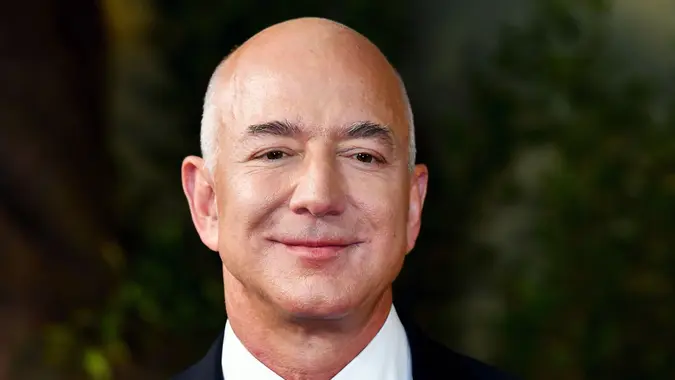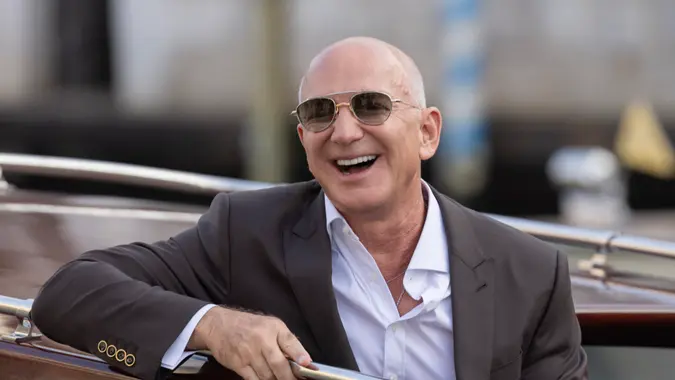‘Rich Dad’ Robert Kiyosaki: Follow These 2 Steps To Stay Out of Debt

Commitment to Our Readers
GOBankingRates' editorial team is committed to bringing you unbiased reviews and information. We use data-driven methodologies to evaluate financial products and services - our reviews and ratings are not influenced by advertisers. You can read more about our editorial guidelines and our products and services review methodology.

20 Years
Helping You Live Richer

Reviewed
by Experts

Trusted by
Millions of Readers
As the author of the bestselling book series “Rich Dad Poor Dad,” Robert Kiyosaki believes that money management should be a top priority for everyone. He’s dedicated his career to helping people achieve financial freedom and avoid destructive debt.
Debt can creep up on anyone, too. Whether it’s a high-interest rate credit card balance or student loans, the debt cycle can seem inescapable — especially for those living paycheck to paycheck. In an article on the Rich Dad website, Kiyosaki shared two “rules of thumb” to help you avoid it.
Step 1: Use Cash for Small Purchases
In the era of tap-to-pay purchases, carrying cash seems like a radical notion. Almost 70% of Americans used cash for “few (if any)” purchases in the past year, according to Capital One Shopping Research.
Going cashless may be convenient, but it leads to thoughtless purchases, especially on a smaller scale. It’s easy to hand over your credit card or tap your phone to buy a $3 soda or a $10 sandwich.
The problem is that those purchases add up. One $10 sandwich three times a week adds up to $120 a month, and a $3 bottle of water every workday is $60 a month.
With cashless spending, it’s easy to miss how those micro-spends pile up. That’s why Kiyosaki recommends using cash for anything under $20. You become more aware of your spending and have to plan for it. If you don’t have the cash in hand, don’t make that purchase.
Step 2: Add 20% Per Charge
“Credit keeps charging,” the Urban Institute said to participants in a study on avoiding credit card debt. “It adds approximately 20% to the total.”
That 20% comes from compounding interest, Kiyosaki explained. If you carry a $1,000 balance from one year to the next, a card with a 20% interest rate would charge you $200. So now, your balance is $1,200.
If you carry that balance for another year, you’ll accrue another $240 in interest, bringing your total to $1,440. By considering that extra 20% upfront, you become more aware of what your credit truly costs and can take better financial steps moving forward.
Bonus Tip: Pay Your Balance
Kiyosaki acknowledged that living without a credit card isn’t practical for most people, especially if you don’t have a lot of extra money or cash lying around. However, if you pay off your balance in full every month instead of minimum payments, you can avoid the traps of compounding interest, overwhelming debt, or the need to borrow money.
For that strategy to work, you need to charge only what you can afford. In other words, imagine that your credit card is a debit card. If the money isn’t in your bank account today, hold off on that purchase. This strategy can help you avoid debt consolidation, debt settlement or the highest interest rates imaginable.
Just a few moments of consideration per purchase can save you from significant amounts of stress and high interest charges down the road.
Final Take To GO: The Danger of Credit Card Debt
The bottom line is that credit card debt is what many money experts call “bad debt.” Missing your monthly payments can wreak havoc on your long-term savings goals.
It also damages your personal finances by letting you buy things that don’t increase in value, leaving you with a balance and interest charges to pay, and no one is less forgiving than the credit card companies or debt collectors.
Caitlyn Moorhead contributed to the reporting for this article.
 Written by
Written by  Edited by
Edited by 
























